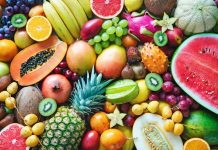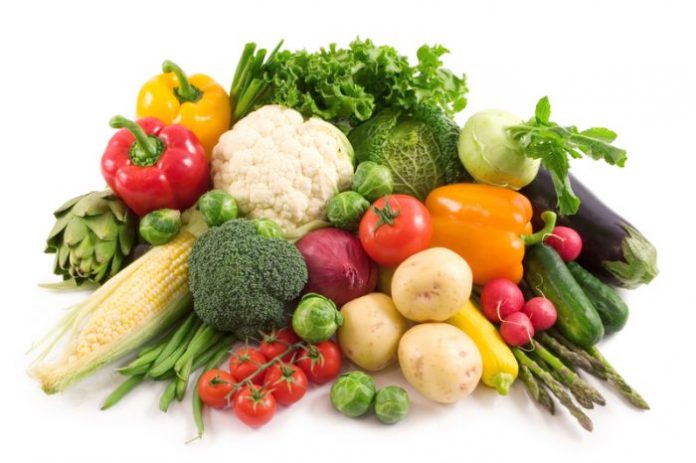Summary
Eating vegetables consistently is significant for well-being. They give fundamental nutrients, minerals, and supplements like cell reinforcements and fiber.
Examination reliably shows that individuals who eat no less than 5 servings of vegetables daily have the most reduced danger of numerous infections, including malignant growth and coronary illness.
Partake in the scope of vegetables day by day to receive however many well-being rewards as could reasonably be expected.
Eating a lot of vegetables might be one of the least complex approaches to further developing well-being and prosperity.
Vegetables contain fortifying nutrients, minerals, and dietary fiber — yet some stand apart for their extraordinary advantages.
Explicit vegetables may offer more well-being benefits to specific individuals, contingent upon their weight control plans, generally speaking, well-being, and healthful requirements.
In this article, we take a gander at 15 of the most fortifying vegetables and recommend approaches to appreciate them as a feature of a fair eating routine.
1. Spinach
Spinach is a verdant green vegetable and an extraordinary wellspring of calcium, nutrients, iron, and cell reinforcements.
Because of its iron and calcium content, spinach is an extraordinary expansion to any meat-or without dairy diet.
One cup of crude spinach is generally comprised of water and contains just 7 caloriesTrusted Source. It likewise gives:
- an adult’s full daily requirements trusted Source of vitamin K
- high amounts of vitamin A
- vitamin C
- magnesium
- folate
- iron
- calcium
- antioxidants
Nutrient K is fundamental for a sound body — particularly for solid bones, as it works on the ingestion of calcium.
Spinach additionally gives a decent measure of iron for energy and sound blood, and a significant degree of magnesium for muscle and nerve work.
It is additionally wealthy in cancer prevention agents, and researchTrusted Source recommends that spinach leaves might bring down pulse and advantage heart wellbeing.
On the off chance that an individual is taking blood thinners, like warfarin (Coumadin), they should utilize alert while expanding their admission of dull mixed greens. Specialists suggest keeping a predictable nutrient K admission after some time for individuals taking these prescriptions.
2. Broccoli
Broccoli is an incredibly healthful vegetable that belongs to the same family as cabbage, kale, and cauliflower. These are all cruciferous vegetables.
Each cup of chopped and boiled broccoli contains:
- around 31 caloriesTrusted Source
- the full daily requirement of vitamin K
- twice the daily recommended amount of vitamin C
According to the National Cancer Institute, animal research has found that certain chemicals, called indoles and isothiocyanates, in cruciferous vegetables may inhibit the development of cancer in several organs, including the bladder, breasts, liver, and stomach.
These compounds may protect cells from DNA damage, inactivate cancer-causing agents, and have anti-inflammatory effects. However, research in humans has been mixed.
How to eat broccoli
Broccoli is very versatile. People can roast it, steam it, fry it, blend it into soups, or enjoy it warm in salads.
For more science-backed resources on nutrition, visit our dedicated hub.
3. Kale
Kale is a trendy leafy green vegetable with several health benefits. It provides around 7 caloriesTrusted Source per cup of raw leaves and good amounts of vitamins A, C, and K.
Kale may benefit people with high cholesterol. One small 2008 study reports that males with high cholesterol who drank 150 milliliters of kale juice each day for 12 weeks experienced a 10% reduction in low-density lipoprotein, or “bad,” cholesterol and a 27% increase in high-density lipoprotein, or “good,” cholesterol.
Research from 2015Trusted Source, meanwhile, suggests that kale juice can reduce blood pressure, blood cholesterol, and blood sugar levels.
If a person is taking blood thinners, such as Coumadin, they should use caution when increasing their intake of dark leafy greens. It is best to maintain a consistent vitamin K intake while taking these medications.
How to eat kale
People use baby kale in pasta dishes, salads, and sandwiches. A person may also enjoy kale chips or juice.
4. Peas
Peas are a sweet, starchy vegetable. They contain 134 caloriesTrusted Source per cooked cup, and they are rich in:
- fiber, providing 9 grams (g) per serving
- protein, providing 9 g per serving
- vitamins A, C, and K
- certain B vitamins
Green peas are a good source of plant-based protein, which may be especially beneficial for people with vegetarian or vegan diets.
Peas and other legumes contain fiber, which supports good bacteria in the gut and helps ensure regular bowel movements and a healthy digestive tract.
They are also rich in saponins, plant compounds that may help protect against trusted sources of oxidative stress and cancer.
How to eat peas
It might be handy to keep a bag of peas in the freezer and gradually use them to boost the nutritional profiles of pasta dishes, risotto, and curries. A person might also enjoy a refreshing pea and mint soup.
5. Beets
One cup of raw beets contains:
- 58.5 caloriesTrusted Source
- 442 milligrams (mg) of potassium
- 148 micrograms of folate
Beets and beet juice are great for improving heart health, as the vegetable is rich in heart-healthy nitrates. A small 2012 studyTrusted Source reports that drinking 500 g of beet juice significantly lowered blood pressure in healthy people.
These vegetables may also benefit people with diabetes. Beets contain an antioxidant called alpha-lipoic acid, which might be helpfulTrusted Source for people with diabetes-related nerve problems, called diabetic neuropathy.
How to eat beets
Roasting beets brings out their natural sweetness, but they also taste great raw in juices, salads, and sandwiches.
6. Sweet potatoes
Sweet potatoes are root vegetables. Baked in its skin, medium sweet potato provides 103 caloriesTrusted Source, and 0.17 g of fat.
Each sweet potato also contains:
- much more than an adult’s daily requirement of vitamin A
- 25% of their vitamin C and B6 requirements
- 12% of their potassium requirement
- beta carotene, which may improve eye health and help fight cancer
Sweet potatoes may be a good option for people with diabetes. This is because they are low on the glycemic index and rich in fiber, so they may help regulate blood sugar.
How to eat sweet potatoes
For a simple meal, bake a sweet potato in its skin and serve it with a source of protein, such as fish or tofu.

7. Carrots
Each cup of chopped carrots contains 52 caloriesTrusted Source and over four times an adult’s daily recommended intake of vitamin A, in the form of beta carotene.
Vitamin A is vital for healthy eyesight, and getting enough of this nutrient may help prevent vision loss.
Certain nutrients in carrots may also have cancer-fighting properties. A 2018 reviewTrusted Source of 10 articles reports that dietary carrot intake was associated with a reduced risk of breast cancer.
How to eat carrots
Carrots are extremely versatile. They work well in casseroles and soups, and they provide great health benefits when eaten raw, possibly with a dip such as hummus.
8. Fermented vegetables
Fermented vegetables provide all the nutrients of their unfermented counterparts as well as healthful doses of probiotics.
Probiotics are beneficial bacteria that are present in the body and in some foods and supplements. Some researchers believe that they can improve gut health.
According to the National Center for Complementary and Integrative Health, probiotics may help with symptoms of irritable bowel syndrome. They may also prevent infection- or antibiotic-induced diarrhea.
Some good vegetables for fermentation include:
- cabbage, as sauerkraut
- cucumbers, as pickles
- carrots
- cauliflower
How to eat fermented vegetables
People eat fermented vegetables in salads, sandwiches, or as a side dish.
9. Tomatoes
Although tomatoes are technically a fruit, most people treat them like vegetables and use them in savory dishes. Each cup of chopped, raw tomatoes contains:
- 32 caloriesTrusted Source
- 427 mg of potassium
- 24.7 mg of vitamin C
Tomatoes contain lycopene, a powerful antioxidant. ResearchTrusted Source suggests that lycopene may help prevent prostate cancer, and the beta carotene in tomatoes also helps combat cancer.
Meanwhile, other potent antioxidants in tomatoes, such as lutein and zeaxanthin, may protect vision.
The Age-Related Eye Disease StudyTrusted Source reports that people who have high dietary intakes of these substances have a 25% reduced risk of age-related macular degeneration.
How to eat tomatoes
People enjoy tomatoes raw or cooked, and cooking them releases more lycopene.
10. Garlic
People have long used garlic in cooking and medicine. Each garlic clove contains just 4 caloriesTrusted Source and is low in vitamins and minerals.
However, garlic is a natural antibiotic. For example, a 2018 reviewTrusted Source notes that people have used garlic for purposes similar to those of antibiotics since the 16th century.
Allium, a component of garlic, maybe the source of its health benefits. Confirming this will require more research.
How to eat garlic
Heating garlic reduces its health benefits, so it is best to eat garlic raw, in bruschetta or dips, for example.
































